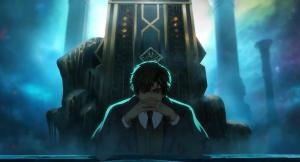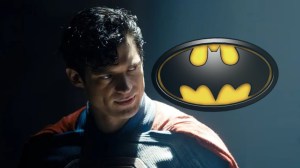As it builds to its conclusion next month, J.M. DeMatteis and Mike Cavallaro have crafted one of the finest superhero stories of the decade in The Life and Times of Savior 28. This book is, as far as I’m concerned, a freight train of quality, barreling through an industry beset with pseudo-significant “events” and showing everybody how it’s supposed to be done. There won’t just be a hole in my pull list after this miniseries is over—there will be a smoking crater where a little piece of the Master Stone was shot into my pull list.This month, ComicBook.com talked with DeMatteis and Cavallaro about starting to really wrap up the story, crafting the backstory that informed #4 and whether or not we can expect to see more from the Savior 28 universe.ComicBook.com: It’s strange–a part of me really wants to see Savior 28′s backstory elaborated on a bit, but the majority of my mind thinks that this story is too much like Watchmen, and should stand on its own. What do you think?JMD: I would love an opportunity to elaborate on 28′s back story. We’ve got 60 years worth of material, sixty years of super-heroics and American history, to play with here…and I can easily envision a series of stories dipping into the Savior 28 universe at various key points in his, and our, history. In fact, because of format constraints, there’s quite a bit of material I’ve already cut out that I’d originally planned to include in the main story. (For instance: a look into the Joe McCarthy/Blacklist era that dovetails into a story about a 1950′s Savior 28television show.) The truth is, there’s enough material here to tell Savior 28 stories for years to come.Anybody up for an ongoing Savior 28 anthology?ComicBook.com: Is it fair to guess that maybe Dennis ACTUALLY shot Jimmy because he wanted to help him achieve some of his goals? By the time we see him assassinated back in #1, he’s disillusioned and beaten down by the crowd. Is Dennis maybe trying to make a martyr out of a lost cause by creating an atmosphere where the world wonders if they were wrong about Savior 28?JMD: That’s very possible…but not in any conscious way. If he felt that way, he wasn’t really aware of it. Then again, perhaps a part of him was aware…and he used that as justification for his actions. Again, there wasn’t just one motivation for this act, there were many. And they were contradictory.ComicBook.com: Is it sometimes hard to express emotion–especially more subtle emotion, like BlackRat’s disappointment at S28, in a character wearing a mask? How do you work around that?Mike Cavallaro: Masks like that are always a cheat, just like most everything else about a superhero costume. All you have to do is look at some Jim Aparo BRAVE and BOLD issues to see him easily conjure any emotion necessary out of Batman, regardless of the mask. As long as you have eyes, forehead wrinkles, and a mouth on the drawing, you should be able to get the idea across.ComicBook.com: If I may say so, successfully navigating that issue while simultaneously drawing in a particular style (the whole of S28 is so nicely stylized) is all the more impressive.MC: Thanks. That issue had a very unique tone to it, I thought. It was my favorite after the first issue.ComicBook.com: Mike–were you going for a bit of a comical look when you had BlackRat’s mask reflected in the face of Denny’s containment suit? It looked to me like there was a dog inside the suit!MC: Well … I definitely wasn’t going for comedy. Choreographing that sequence was interesting. There was a lot of standing around in a room, talking to each other. What you run into is that to show one person, you have to show someone else’s back. Angling things so that we could see Jimmy in the monitors helped, and in that panel specifically, I wanted to stay on BlackRat’s angry eyes while also focusing on the new player in the room, Dennis McNulty.ComicBook.com: Was the containment suit an idea of yours or of JM’s? I can’t quite tell if maybe he needed protection from what they were doing with the Master Stone becuase of his history as having been Savior 28 too.MC: JM’s script called for a sort of retro, henchman-esque hazmat suit. A lot of hazmat suits are sort of shapeless dayglo garbage bags and I didn’t want McNulty’s crew running around in those. I adapted some more stylish suit designs I came across. In general, I thought of these footsoldiers and Hydra-type henchmen. The suits enable them to fight on in adverse conditions (like the knockout gas in issue three), and also serve to conceal their identities.ComicBook.com: It’s interesting–the passing references to there being multiple BlackRats make sense in context, but he’s a Batman proxy. No magical de-aging for characters in the S28 universe?JMD: For some, yes. For BlackRat, no. It was just a natural outgrowth of the character.ComicBook.com: Again—I like that answer in that it implies a deeper understanding of the character (really there’s not enough of him yet to have “natural outgrowths” for the reader) without necessarily giving it up (or cramming it down our thoats in an exposition box). What characters have the most detailed backstories, in your mind?JMD: All the main characters have pretty detailed back stories: Jimmy, Dennis, Samantha, her daughter, Julia. (I even had a very detailed biography worked out for Julia’s dad. I wrote it, but had to cut it out.) There was so much more I wanted to reveal about Queen Shakti and the Lemurian. And there were many more details about other subsidiary characters—like the various heroes and villains in the S-28 universe—that simply couldn’t be squeezed into a five-issue story.ComicBook.com: Do you have a backstory for the “ridiculous black costume? It’s so early ’90s Image Comics it almost hurts! I want an Erik Larsen variant cover!JMD: We were just trying to capture the feeling of that era. And that particular sequence was (in my mind, at least) a riff on “Kraven’s Last Hunt”—which puts us in the “grim and gritty” late 80′s, not the early 90′s.ComicBook.com: What went into designing S28′s “Kraven’s Last Hunt” costume?MC: I don’t know if you realize this, but a lot of the design work is very spontaneous. To stay on schedule penciling and inking a monthly book, I have to do 2 pages a day. I pencil maybe 14 pages of The Life and Times of Savior 28 in a week. The same goes when I start inking. There have been days where I had 13 brand new, never-before-seen characters on a page. I’d have to design them, pencil the page, and then pencil that second page to stay on schedule.In this case, JM’s script notes would point me towards a period in comics, like “Mike, think late 80′s grim-and-gritty”, and I’d go from there. At this pace, it has to be pretty intuitive and spontaneous.I always got the sense that a lot of the early Marvel artists who’s work I love were really flying by the seat of their pants half the time for the same reasons. Somehow the energy carries through regardless. That’s comics.ComicBook.com: Is whatever’s glowing on S28′s chest during the interrogation the same substance that’s glowing in the bullets?JMD: That’s the Master Stone that gives S-28 his power—and the bullets are indeed made from the same substance (but not from the piece of the Stone in Jimmy’s chest).ComicBook.com: “I’d rather die for this delusion, than go on telling the same old story.” I feel like that’s one of those lines that ought to be remembered forever and put on t-shirts. Is it hard to write an “eloquent son of a bitch” and BE eloquent enough to carry it off?JMD: Once you connect with a character, find his voice, it’s not about “you” any more. It’s not about trying to make him do this, say that. It’s about letting that character come alive and getting the hell out of the way. If 28 is eloquent…it’s because, well, 28 is eloquent. If you know what I mean.ComicBook.com: In terms of that action movie moment that makes the audience cheer–what does it say about 28 that he doesn’t tear Dennis’s arm off and fly away with those bullets?JMD: That he’s naive? That he has a death wish? That he has hope that his old friend won’t betray him in the end? That some part of him thinks he’s beaten every threat thrown at him since l939 and he’s going to beat this, too? All of the above?ComicBook.com: Or maybe that some part of him thinks he’s beaten every threat thrown at him since 1939 and it’s time to just let one beat him?JMD: Well, that plays into the death wish, doesn’t it? He’s been doing this so long and he’s exhausted. And dying for the grand ideal, even if he fails, doesn’t seem like such a bad idea. I really think it’s a combination of all of these things. And when you get to the last issue, there’s one more element that I’ll be happy to discuss…but if I bring it up now, I’ll give away the ending!ComicBook.com: In terms of a greater political context, was this issue meant to be a commentary on torture? Surely what Dennis and the superheroes do to Jimmy is what finally drives him into the arms of their enemies–whether “the enemies” are all that bad or not seems almost irrelevant.JMD: You’ve hit the nail right on the head!ComicBook.com: It’s funny–while the series in general doesn’t veer away from violent or bloody sequences, some of the most disturbing images have been ON THE COVERS OF THE BOOKS. Is this a big red flag to young readers that S28 is for grown-ups, in spite of its Silver Age look?MC: There are young people reading comics??? No, seriously, we didn’t purposefully use the covers to ward off younger readers, if that’s what you mean. I think covers are really difficult. There’s this desire to sort of encapsulate the particular issue’s themes in a single image. JM says he initially dreamed of being a comic book artist, but ended up writing instead. The fact is that he’s an extremely visual person, and his scripts bear this out. Normally, he would have a couple suggestions for each issue’s covers. We’d start there, and I’d either do my take on his idea, or I’d counter with a suggestion of my own. The covers are all some combination of that. Basically, we just tried to come up with images that either encapsulated or furthered that issue’s themes.ComicBook.com: Another practical art question: the “wave” splash page looks very epic–the whole thing looms large in the book–but of course you have to turn the comic to really get the effect. Is that something that you worry about as an artist, working within this kind of constrained canvas, or are you just worried about the image itself and you figure the readers are smart enough not to let it bug them?MC: I was very worried about it at first. It started out as a necessity, due to the page count constraints. I think the first time we did that was in the second issue. Then, I was reading a comic … I can’t remember what the heck I was reading right now … and the same thing occurred. I was already a few pages past it when I realized, “Hey, wait … they made me turn the book …” You know, I just didn’t without even realizing it. After that I wasn’t concerned at all.Just this week my studiomate, Dean Haspiel, asked if we would turn all those into double page spreads if there’s a trade paperback version somewhere down the road. That hadn’t even occurred to me, but I think it’s a great idea, as it would make those few images loom even larger.ComicBook.com: Now back to JM – at the time when you originally conceived this story, there wasn’t a “child” for Captain America. Was Dennis and his daddy issues something that was made up from whole cloth here or did you have a particular sidekick in mind when you were writing it?JMD: I learned most of what I know about Dennis as I was writing the story.Dennis, perhaps more than any other character, really revealed himself to me in the writing. So the psychological layering that arose came from him as the story unfolded, not from any pre-planned biography. There are other elements of Dennis’s back story I wanted to explore—elements he revealed to me in the course of the writing—but, again, space constraints forced them out.ComicBook.com: Now, on the ending–the last time we talked, Denny’s life was still in your hands. Is his fate decided yet?JMD: The final issue is written. Dennis’s fate has been decided. But you’ll have to read the conclusion to find out.
Savoring Savior: J.M. DeMatteis and Mike Cavallaro on the Life and Times of Savior 28 #4
As it builds to its conclusion next month, J.M. DeMatteis and Mike Cavallaro have crafted one of […]










